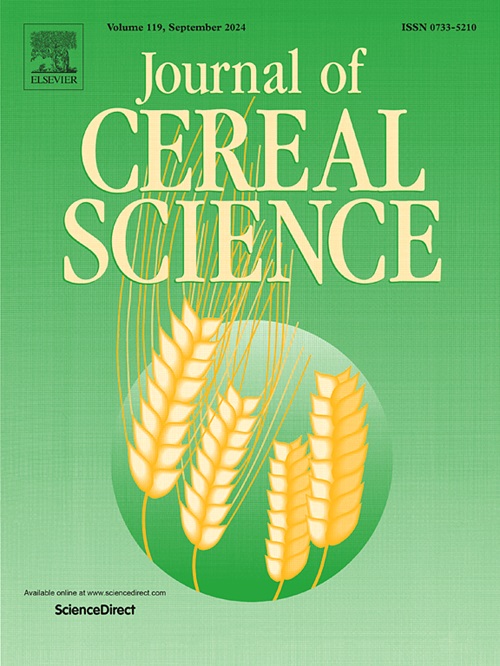Genome-wide association study revealed novel MTAs for gamma-amino butyric acid in germinated brown rice
IF 3.7
2区 农林科学
Q2 FOOD SCIENCE & TECHNOLOGY
引用次数: 0
Abstract
Psychiatric nutrition underscores the vital connection between diet and mental well-being. Germinated Brown Rice (GBR), serves as one of the richest natural sources of γ-aminobutyric acid (GABA), a neurotransmitter known for alleviating stress-related disorders, anxiety, and other mental health concerns, thus making GBR a healthier alternative to white rice. The current study depicts a maiden effort to systematically characterize rice germplasm accessions for GABA content in GBR at two locations—Aduthurai, Tamil Nadu and New Delhi—revealing broad genetic variation (7.19–75.04 mg/100g and 9.32–35.74 mg/100g, respectively) for the trait. The genotype, OYR128, that showed stable expression across two locations is identified as a potential donor for introgression breeding programs. The panel was genotyped with 50K SNP markers, and genome-wide association analysis using the multi-locus models FarmCPU and BLINK identified six significant MTAs for GABA content, explaining 0.06–4.15 % of the phenotypic variance. In-silico analysis identified 10 putative candidate genes in the MTA regions, including those encoding Proline-rich proteins, Orn/DAP/Arg decarboxylase, and Aldehyde dehydrogenase, which play key roles in GABA biosynthesis. These MTAs and candidate genes can be deployed in breeding strategies for enhancing GABA content in GBR and developing biofortified rice varieties with nutraceutical properties.
全基因组关联研究发现发芽糙米中γ -氨基丁酸的新MTAs
精神病学营养学强调了饮食和精神健康之间的重要联系。发芽糙米(GBR)是γ-氨基丁酸(GABA)最丰富的天然来源之一,GABA是一种神经递质,以缓解压力相关疾病、焦虑和其他精神健康问题而闻名,因此使GBR成为白米的健康替代品。目前的研究首次系统地分析了两个地点(阿杜图莱、泰米尔纳德邦和新德里)GBR中GABA含量的水稻种质资源,揭示了该性状的广泛遗传变异(分别为7.19-75.04 mg/100g和9.32-35.74 mg/100g)。该基因型OYR128在两个位点上稳定表达,被确定为渐渗育种计划的潜在供体。使用50K SNP标记对该群体进行基因分型,使用多位点模型FarmCPU和BLINK进行全基因组关联分析,确定了GABA含量的6个显著mta,解释了0.06 - 4.15%的表型变异。通过计算机分析,在MTA区域确定了10个可能的候选基因,包括编码脯氨酸丰富蛋白、Orn/DAP/Arg脱羧酶和醛脱氢酶的基因,这些基因在GABA的生物合成中起关键作用。这些mta和候选基因可用于提高GBR中GABA含量的育种策略和开发具有营养保健特性的生物强化水稻品种。
本文章由计算机程序翻译,如有差异,请以英文原文为准。
求助全文
约1分钟内获得全文
求助全文
来源期刊

Journal of Cereal Science
工程技术-食品科技
CiteScore
7.80
自引率
2.60%
发文量
163
审稿时长
38 days
期刊介绍:
The Journal of Cereal Science was established in 1983 to provide an International forum for the publication of original research papers of high standing covering all aspects of cereal science related to the functional and nutritional quality of cereal grains (true cereals - members of the Poaceae family and starchy pseudocereals - members of the Amaranthaceae, Chenopodiaceae and Polygonaceae families) and their products, in relation to the cereals used. The journal also publishes concise and critical review articles appraising the status and future directions of specific areas of cereal science and short communications that present news of important advances in research. The journal aims at topicality and at providing comprehensive coverage of progress in the field.
 求助内容:
求助内容: 应助结果提醒方式:
应助结果提醒方式:


